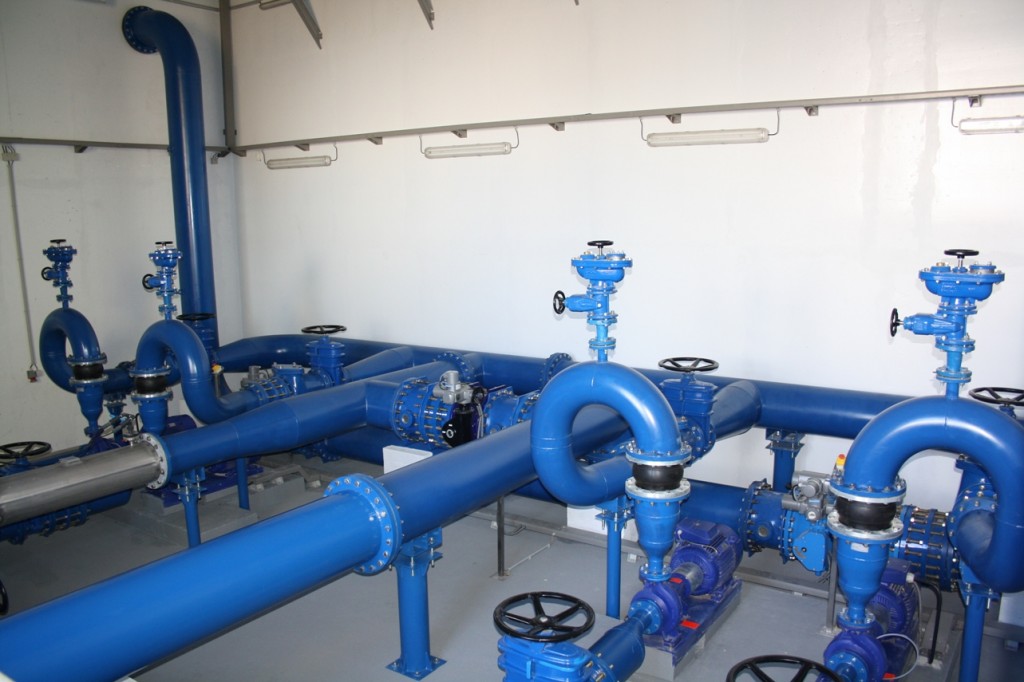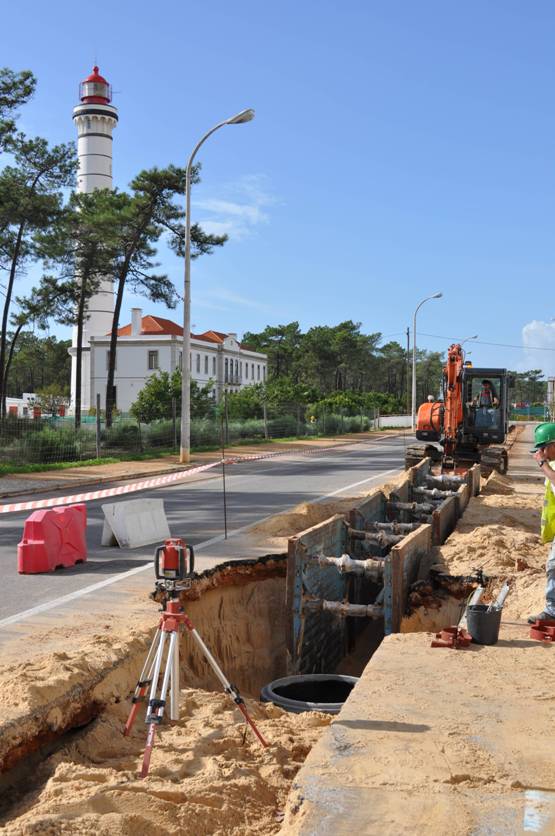 After an investment of around 61 million euros over ten years, «there are no longer any sewers running directly into the River Guadiana» in Vila Real de Santo António.
After an investment of around 61 million euros over ten years, «there are no longer any sewers running directly into the River Guadiana» in Vila Real de Santo António.
This municipality in Sotavento, through the municipal company SGU, made a strong investment in the renovation and conversion of its basic sanitation and water supply network. The intervention is almost finished and has already allowed to resolve the environmental issues which motivated fines from the European Union to the Portuguese State.
The Chamber of VRSA presented the works that have already been completed or are about to finish, of water and sewage, in a session that took place yesterday, Wednesday. The session was attended by the Secretary of State for the Environment, Paulo Lemos, and the Assistant Secretary of State to the Assistant Minister for Regional Development, Pedro Lomba, not least because a good portion of the money spent came from the Operational Program for the Enhancement of the Territory ( POVT), instrument created to guarantee financing for infrastructure considered essential.
This intervention was carried out in two distinct phases, the last of which was carried out between 2013 and 2015, close to completion. In this case, 31 million euros were invested in 25 contracts, some of which were quite heavy, such as the construction of a new water reservoir in the county seat and interceptor systems and lifting stations in Manta Rota, to name just a few. Between 2005 and 2012, 30 million euros had already been invested in 75 works.
Before, and since the mayor of VRSA Luís Gomes was elected for the first time to this position, about 10 years ago, around 30 million euros had already been invested, in the different parishes, in 75 works of the same nature.
 The works reached the three parishes of the municipality – Vila Real de Santo António, Monte Gordo and Vila Nova de Cacela. In this second phase, a total of “34 kilometers of new sewage pipes and 33 kilometers of new water pipes” were built, with more than 30 million euros invested. Four water reservoirs and 17 pumping stations were also built.
The works reached the three parishes of the municipality – Vila Real de Santo António, Monte Gordo and Vila Nova de Cacela. In this second phase, a total of “34 kilometers of new sewage pipes and 33 kilometers of new water pipes” were built, with more than 30 million euros invested. Four water reservoirs and 17 pumping stations were also built.
The municipality was helped by community funds in this effort, with the European Union guaranteeing a contribution that reached «41 percent of the total value of the interventions».
«The water cycle was closed and we ended up with a situation that did not honor the municipality, its population and the entrepreneurs who chose it to invest», summed up Luís Gomes, in the presentation session. "It was not a cosmetic work, it was a deep, structuring intervention that prepares VRSA for the future," he added.
Luís Gomes recalled that, when he assumed the presidency of the municipality, the situation was quite different. “Before, rainwater and sewage all drained into the same network. That was why bad smells sometimes came out of the gutters. The network only reached 70 percent of the people and sewers ran into the Guadiana. In some places, there were septic tanks near the beach», he recalled.
This situation is a thing of the past. And it is not the only one, since the threat that hung over the Vilarealse municipality of paying a daily fine for non-compliance with the European Water Directive has also ceased to exist. “The Portuguese State had already been fined, due to the situation here in VRSA and in Matosinhos. But the new rules stipulate that, from now on, the municipality itself will pay», revealed Luís Gomes, on the sidelines of the session. With the completion of these works, Vila Real de Santo António gets rid of this fine.
Pedro Pires, in charge of the municipal company SGU, who directed the construction process, stressed that the intervention allowed «to put an end, once and for all, to the sewage running into the Guadiana».
Other problems that it was possible to solve were the water pressure, which was low in some places, and its quality, since, revealed Pedro Pires, there were places where it came out of the tap «with a doubtful color», due to the bad network status. Also the amount of water is greater. «We have autonomy to withstand 24 hours on the day of greatest consumption, 15th of August, without any external supply», he exemplified.


















Comments